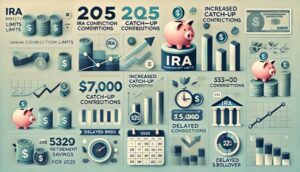Here is an article from Nerdwallet that focuses on the IRS rules and regulations for Required Minimum Distributions (RMD) from retirement accounts. Here are the key points you learn from this article:
1. What is an RMD?
2. What are the rules for RMDs.
3. How RMDs are calculated.
4. RMDs when you have multiple accounts.
Don’t get caught paying more taxes in your retirement years than you need.
If you have not made your tax appointment yet, please call us so we can schedule it. I look forward to helping you with your taxes this year.
Bob Donica
Source: NerdWallet | Repost RE Donica & Associates 4/05/2023 –
What are RMDs?
RMDs are required minimum distributions, the minimum amount you must withdraw from your retirement account each year by Dec. 31.
The IRS spends a lot of energy making sure people don’t tap their retirement accounts early, imposing taxes and penalties on most early withdrawals. But at a certain age, the agency will force you to take money out of your retirement account. These distributions are primarily enforced on tax-deferred retirement accounts.
This includes workplace plans such as 401(k)s and 403(b)s, as well as traditional individual retirement accounts and self-employed retirement plans, including SIMPLE and SEP IRAs. Starting in 2024, certain non-IRA Roth accounts will no longer require RMDs.





